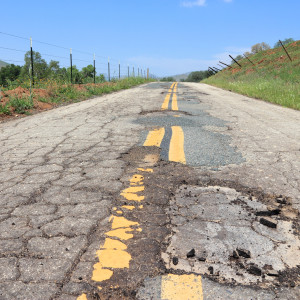The Trump administration is developing principles that will guide future highway funding. At a recent White House meeting with state transportation officials, the administration announced it was considering shifting greater funding responsibilities to the states. Along with expanding the private sector’s role and loosening tolling restrictions, these reforms will result in better decisions and management of the transportation system. It makes sense for Congress to support these transportation policy reforms.
Ted Mann of the Wall Street Journal recently reported that the administration is thinking about reducing the share of federal dollars that fund highway construction. Rather than receiving the usual 80 percent to 90 percent share of federal funding for highway construction, states would receive about 20 percent of project costs. The idea is for state and local governments to fund the bulk of a project, with the federal government kicking in the final funds needed to close the deal. If the administration follows through on this reform, we can expect state and local officials to make better choices as to which projects to fund. Here’s why:
Most highways and roads predominantly serve local residents. Elected officials should prioritize those highway or road projects where the value or benefits to the community (e.g., faster and safer trips) outweigh the costs of building and maintenance. Because local officials have better information about local transportation needs than officials in Washington, these decisions are best made at the local or state level. For most highway and road decisions, there is no economic argument for federal involvement.
Critics will claim that many towns or even states will find voters unwilling to support efforts to raise funds through taxes or borrowing to finance local highway projects. But that’s the whole point of shifting more funding responsibilities to states and cities. When a community is not willing to pay for a new road with higher taxes or borrowing, it’s telling officials that the project is not worth moving forward. That is, the benefits are less than the anticipated costs. Since the road doesn’t pass a simple benefit-cost test, it should not be built.
Currently, federal dollars and political lobbying by construction unions distort these choices. Suppose a highway project would cost a community more dollars to build and maintain than the benefits it provides. The project should not be built. When the federal government kicks in 80 percent or 90 percent of the funds, a highway may be built even when there are better alternative uses of the funds.
There are cases where there is an economic argument for federal or state funding, but they are far more limited than in the current system. If drivers using the highway live outside the community or state, we cannot expect local politicians to factor in these spillover benefits. Non-voting, non-taxpaying drivers are unlikely to influence project funding decisions. This can result in a decision not to build a highway because the officials’ estimate of the benefits is less than the cost even when, in fact, the true total benefits exceed the cost. Here, the federal government, or in some cases state governments, can step in and provide funds to tip the scale in favor of the project.
How common and how big are these spillover benefits? It’s difficult to tell. But it’s highly unlikely that they are worth the current federal subsidy of 80 percent to 90 percent of a project’s cost. That would require the vast majority of drivers on most roads and highways to be from other communities. Survey data from the U.S. Department of Transportation indicate about one-third of drivers on interstate highways are from out of state. Also, the average drive is only about 10 miles. This suggests the current federal contribution is far too high. The administration’s idea to lower the federal government’s funding share in highway financing makes economic sense.
It’s good to hear that the administration is considering sound principles to reform how we fund highways. Shifting greater funding responsibilities to state and local governments would improve transportation decision making. It would make sense for Congress to embrace this reform.

